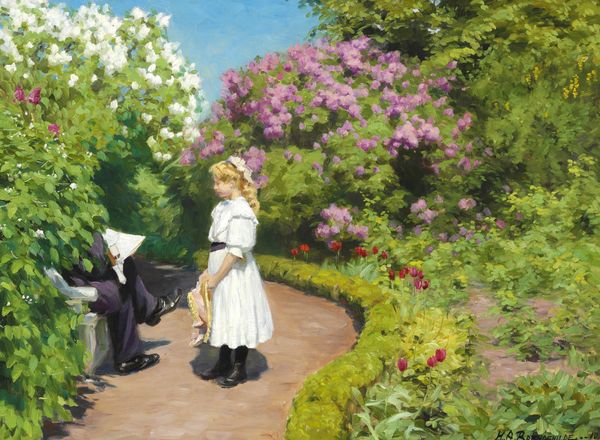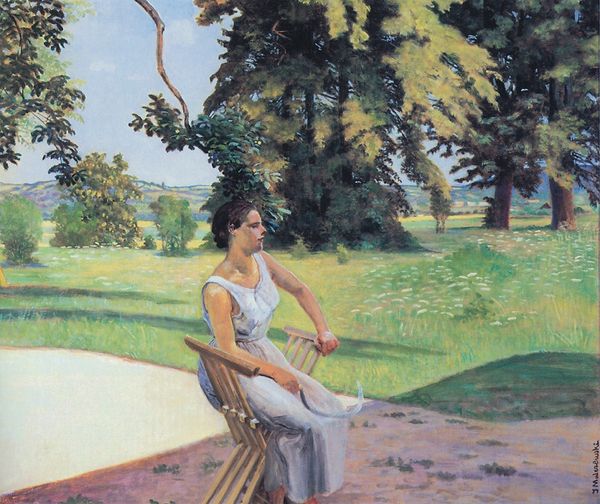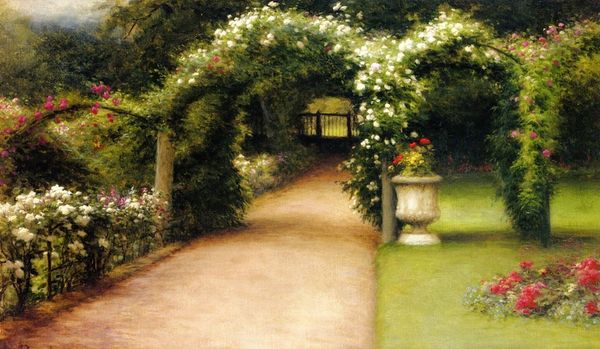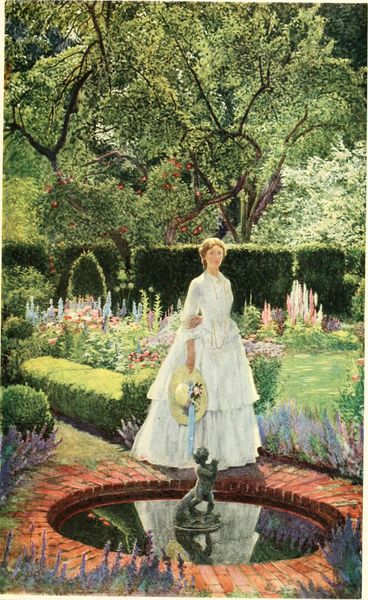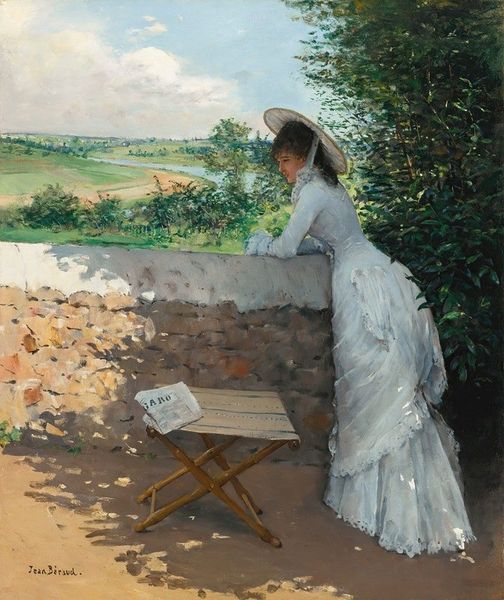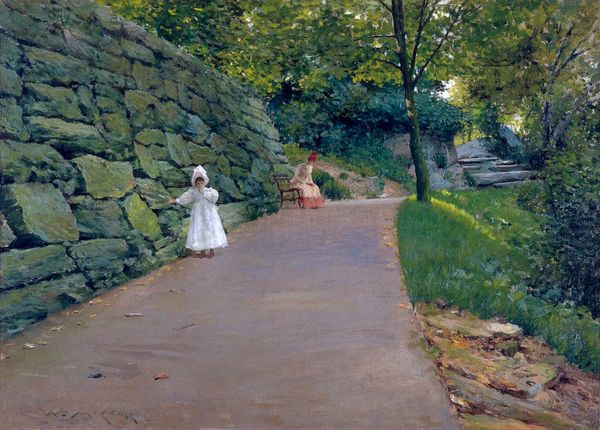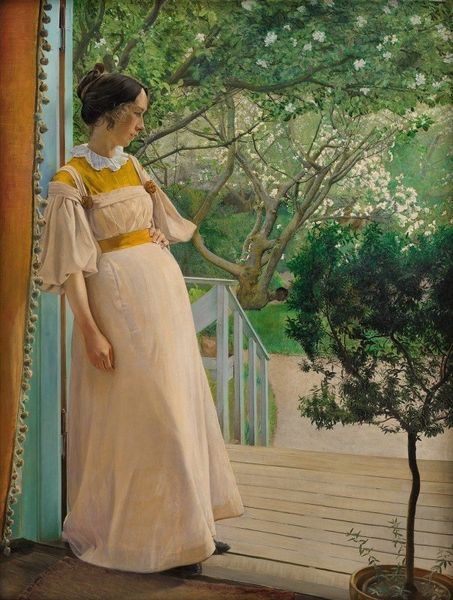
painting, plein-air
#
portrait
#
painting
#
impressionism
#
plein-air
#
landscape
#
genre-painting
#
academic-art
#
realism
Copyright: Modern Artists: Artvee
Editor: This is “Garden Steps” by Arthur Sarnoff, a painting rendered in what seems to be a plein-air style. I’m immediately struck by the composition—the way the staircase cuts diagonally across the canvas. How would you interpret the formal aspects of this painting? Curator: Certainly. Consider the rigorous geometry at play here. The staircase, with its receding steps, establishes a strong sense of linear perspective. Note how Sarnoff employs a limited palette of predominantly pastel hues to create visual harmony and unity within the picture plane. Are you also noticing the carefully constructed light? Editor: Yes, the light seems quite soft, almost diffused, creating a tranquil, serene atmosphere. And I’m also thinking about how the repetition of vertical elements - the trees and balusters - creates a structured rhythm within the landscape. Curator: Precisely! The structural organization, balanced with naturalistic elements such as foliage, results in a study in pictorial equilibrium. Do you see how the figure, dressed in white, serves as a focal point? She anchors the composition, preventing the eye from escaping the constructed space. Editor: That’s a great observation. So, the figure becomes part of the formal structure, rather than simply being a subject *in* the landscape. It makes me think about the function of genre paintings and portraiture. It is very impressive. Curator: Exactly. The formal structure elevates the ordinary, transforming a mere scene into a meticulously designed composition. Editor: Thank you, I hadn’t considered the interplay between naturalistic representation and geometrical forms this way before! Curator: A deeper formal examination often reveals those subtle but significant connections between form and content.
Comments
No comments
Be the first to comment and join the conversation on the ultimate creative platform.

